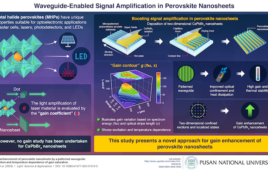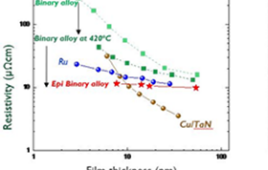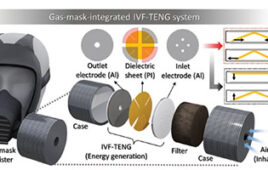Image of Carbon Design Innovations, Inc.’s CCHR probe for AFM imaging. Image: Carbon Design Innovations, Inc. |
Light microscopes of the past would only allow researchers to see particles as small as 500 nm; atomic force microscopes (AFMs) and scanning electron microscopes (SEMs)—with the help of nanotechnology probes and software—can see and create structures as small as 1 nm. These new innovations are pushing the technology edge in a wide variety of fields including life science, material science, semiconductors, and bioscience.
The dip pen nanolithography (DPN) product from NanoInk, Skokie, Ill., is just one example. DPN “is a research oriented product that has an integrated atomic force microscope in it,” according to Tom Levesque, vice president of the Nanofabrication Division, NanoInk. The product allows researchers to make small structures in the 15 nm range out of a variety of materials for semiconductor and life science applications. These materials are transferred from a very sharp AFM tip to a surface. NanoInk uses the engine from the AFM to create a framework to transfer materials and write these nano-sized structures. The DPN technology is especially important to NanoInk’s NanoBio and Nano Stem Cell divisions.
Carbon Design Innovations, Inc. (CDI), Burlingame, Calif., makes its AFM probes from carbon nanotubes. “Our carbon nanotubes offer a way of extending the depth of profiling,” says Vince Nau. CEO of Carbon Design Innovations, Inc. CDI’s nanotubes can be adapted to any AFM probe and are universally applicable across all AFM applications. They offer high resolution, high-aspect ratio, and longer lifetime than typical probes. “The carbon nanotubes offer the ability to provide a very high aspect ratio to an AFM probe, allowing researchers to expand the effective depth of the imaging from the surface of the probe by several nanometers to even microns,” Nau explains. With these probes, researchers can gain a high-resolution image at a molecular and sub-molecular scale of structures that are several hundred nanometers to a micrometer deep.
One of the specific types of AFM probes CDI created is the CCHR probe. These probes are made from their carbon nanotubes, and are used for general high resolution imaging purposes. “They are a little bit shorter than a high aspect ratio probe. But they are reinforced at the base, and they can still extend down to about 200 nm,” says Nau. “The product really enables the high resolution imaging aspects of AFM to be applied to structures of higher estate concept.” The primary focus application of the CCHR probe is material characterization and metrology.
Researchers can calculate the size and distribution of nanoparticles using a conventional light microscope, digital camera, and technology from NanoSight, Amesbury, Wiltshire, U.K. This is achieved through visualization of the scattering of laser light, rather than a resolved image. NanoSight’s nanoparticle tracking analysis software is used with the LM10 and LM20 instruments, allowing the researchers to measure the size of the nanoparticles. Jeremy Warren, chief executive, NanoSight, says, “We have developed the nanoparticle tracking analysis software ourselves, and it is important because it calculates the size of particles individually. This particle size distribution data is then validated by the image. This method also allows us to measure concentration.”
These instruments allow viewing of many particles and the Brownian Motion. Because the speed of movement relates directly to particle size—the smaller ones move much faster—they can be sized individually. As a tool for the nanotechnology researcher, NanoSight provides a highly-detailed understanding of all of the particles in a suspension. And size really matters in nanotechnology. For example, smaller active pharmaceutical particles have proportionally more surface area resulting in enhanced effectiveness. For catalyst particles, small size means more reactivity.
NanoSight’s technologies can be used in industries as diverse as pharmaceuticals, paints and pigments, catalyst manufacturing, and semiconductor manufacturing.
Published in R & D Magazine: Vol. 51, No. 4, August, 2009, pp.14-15.





